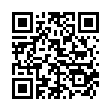|
This article is cited in 28 scientific papers (total in 28 papers)
Large $N$ Limits in Tensor Models: Towards More Universality Classes of Colored Triangulations in Dimension $d\geq 2$
Valentin Bonzom
LIPN, UMR CNRS 7030, Institut Galilée, Université Paris 13, Sorbonne Paris Cité, 99, avenue Jean-Baptiste Clément, 93430 Villetaneuse, France
Abstract:
We review an approach which aims at studying discrete (pseudo-)manifolds in dimension $d\geq 2$ and called random tensor models. More specifically, we insist on generalizing the two-dimensional notion of $p$-angulations to higher dimensions. To do so, we consider families of triangulations built out of simplices with colored faces. Those simplices can be glued to form new building blocks, called bubbles which are pseudo-manifolds with boundaries. Bubbles can in turn be glued together to form triangulations. The main challenge is to classify the triangulations built from a given set of bubbles with respect to their numbers of bubbles and simplices of codimension two. While the colored triangulations which maximize the number of simplices of codimension two at fixed number of simplices are series-parallel objects called melonic triangulations, this is not always true anymore when restricting attention to colored triangulations built from specific bubbles. This opens up the possibility of new universality classes of colored triangulations. We present three existing strategies to find those universality classes. The first two strategies consist in building new bubbles from old ones for which the problem can be solved. The third strategy is a bijection between those colored triangulations and stuffed, edge-colored maps, which are some sort of hypermaps whose hyperedges are replaced with edge-colored maps. We then show that the present approach can lead to enumeration results and identification of universality classes, by working out the example of quartic tensor models. They feature a tree-like phase, a planar phase similar to two-dimensional quantum gravity and a phase transition between them which is interpreted as a proliferation of baby universes. While this work is written in the context of random tensors, it is almost exclusively of combinatorial nature and we hope it is accessible to interested readers who are not familiar with random matrices, tensors and quantum field theory.
Keywords:
colored triangulations; stuffed maps; random tensors; random matrices; large $N$.
Received: March 14, 2016; in final form July 20, 2016; Published online July 24, 2016
Citation:
Valentin Bonzom, “Large $N$ Limits in Tensor Models: Towards More Universality Classes of Colored Triangulations in Dimension $d\geq 2$”, SIGMA, 12 (2016), 073, 39 pp.
Linking options:
https://www.mathnet.ru/eng/sigma1155 https://www.mathnet.ru/eng/sigma/v12/p73
|

| Statistics & downloads: |
| Abstract page: | 137 | | Full-text PDF : | 32 | | References: | 31 |
|




 Contact us:
Contact us: Terms of Use
Terms of Use
 Registration to the website
Registration to the website Logotypes
Logotypes








 Citation in format
Citation in format 
